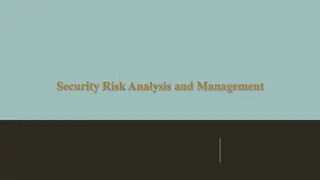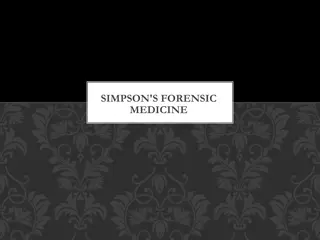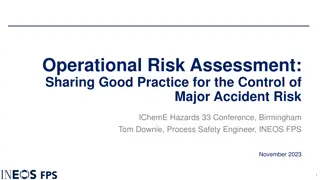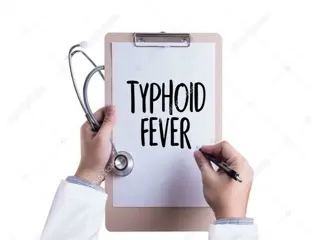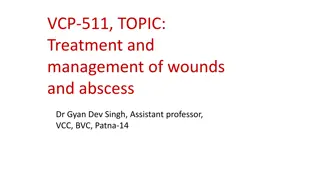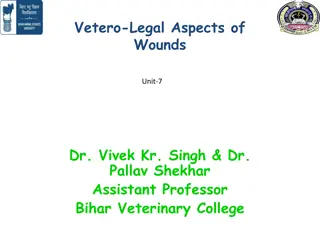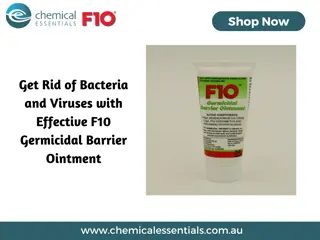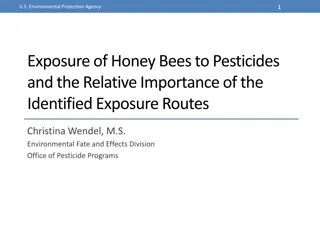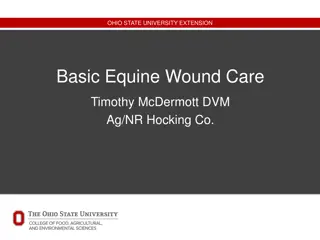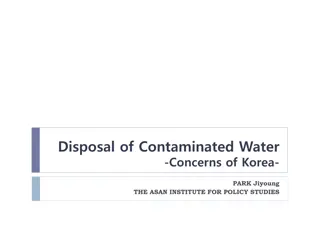Contaminated Wounds: A Risk Assessment Challenge
Delve into the risk assessment challenges posed by contaminated wounds, exploring the various types of radiation, radiation pathways, operational processes, conventional safety approaches, severity and avoidance considerations, and the distinctions between nuclear safety and process safety. Understand the complexities of managing hazardous materials in high-risk, low-frequency events with a focus on containment strategies and risk thresholds.
Download Presentation

Please find below an Image/Link to download the presentation.
The content on the website is provided AS IS for your information and personal use only. It may not be sold, licensed, or shared on other websites without obtaining consent from the author.If you encounter any issues during the download, it is possible that the publisher has removed the file from their server.
You are allowed to download the files provided on this website for personal or commercial use, subject to the condition that they are used lawfully. All files are the property of their respective owners.
The content on the website is provided AS IS for your information and personal use only. It may not be sold, licensed, or shared on other websites without obtaining consent from the author.
E N D
Presentation Transcript
Contaminated Wounds: A Risk Assessment Challenge Tim Boland, Safety-in-Engineering Lead, Sellafield Ltd. Richard Cooper, Safety Process & Methodology, Sellafield Ltd. 24 February 2025
Basics of Ionising Radiation Radiation type Distance in air Shielded by 2-3 cm paper ALPHA 3-4 maluminium BETA GAMMA lead/concrete infinity infinity n jabroc/water NEUTRON
Radiation Pathways External Radiation External Contamination Internal Radiation
Operations Production of powders and pellets Opening of legacy packages Re-packaging of materials Decommissioning and dismantling of legacy facilities Analytical laboratory work
Conventional Approach Supply of Machinery (Safety) Regulations 2008 Essential Health and Safety Requirements BS EN ISO 12100 Assess in advance Assess measures introduced
Severity 1 slight (normally reversible) injury or damage to health 2 serious (normally irreversible) injury or damage to health 3 death Frequency 1 seldom to quite often 2 frequent to continuous Probability 1 low (so unlikely that it can be assumed occurrence may not be experienced) 2 medium (likely to occur sometime in the life of an item) 3 high (likely to occur frequently) Avoidance 1 possible under specific conditions 2 scarcely possible
Nuclear Safety and Process Safety Both about containment of hazardous material Both concerned with very low frequency high consequence events However lower tolerability of risk Lower thresholds Emphasis on defence-in-depth, determinism and conservatism
Assessment Identification of hazards HAZOP Walkdown / Workface assessment Unexpected sharps Consequences Mechanism of harm complex Physical / chemical / biological interactions Broad brush qualitative only
Hierarchy of Controls Removal of Contaminated Wound hazards through primary containment of inventory - hazardous material contained within robust physical barriers which cannot be breached or pierced Removal of Contaminated Wound hazards by removing the need for hands-on operations e.g. automated or remotely operated processes ELIMINATE remove the hazard Reduce the mobile contamination present on exposed surfaces, e.g. Decontaminate prior to hands on operation/maintenance Reduce the opportunity for (likelihood of) wounding), by reducing the amount of hands-on operation/maintenance required to deliver the operations by design (e.g. inherently safe tooling) Reduce the opportunity for (likelihood of) wounding by engineering/operational design/manufacturing - e.g. removal of sharps, heat sources, flammable atmospheres, moving machinery, etc. REDUCE the inerent harm potential of the hazard CONTROL Engineered Protection Systems or Operational Controls which keep personnel away from contaminated areas or injurious equipment (Isolate) e.g. interlocks to prevent entry to room/glove box, Isolation procedures Preventing injury by provision of PPE prevent the hazardous material from resulting in harm MITIGATE Medical intervention to remove the hazardous material from the body (mitigate resulting dose uptake) o reduce the level of harm that could result from the hazardous material
Demonstrating ALARP: Paths not travelled Some potential barriers are not appropriate Context of mission? Adverse consequences?
Summary Contaminated Wounds assessment is conventional wound assessment plus! Difficult to quantify Requires systematic justification Opportunities to improve Wider context of operation


